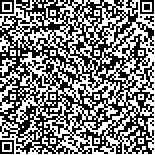居磊磊,许光旭,孟兆祥,等.重复经颅磁刺激诱导下运动想象疗法对脑卒中患者上肢运动功能的影响[J].中华物理医学与康复杂志,2022,44(7):599-603
扫码阅读全文

|
| 重复经颅磁刺激诱导下运动想象疗法对脑卒中患者上肢运动功能的影响 |
|
| |
| DOI:10.3760/cma.j.issn.0254-1424.2022.07.005 |
| 中文关键词: 重复经颅磁刺激 运动想象疗法 脑卒中 运动诱发电位 上肢运动功能 |
| 英文关键词: Stroke Transcranial magnetic stimulation Motor imagery therapy Motor evoked potentials Upper limb motor function |
| 基金项目: |
|
| 摘要点击次数: 4820 |
| 全文下载次数: 5365 |
| 中文摘要: |
| 目的 观察重复经颅磁刺激(rTMS)诱导下运动想象疗法(MIT)对脑卒中患者上肢运动功能的影响。 方法 按照随机数字表法将90例脑卒中患者分为对照组、运动想象组、联合治疗组,每组30例。3组患者均给予常规康复,运动想象组在此基础上增加MIT治疗,联合治疗组在运动想象组基础上增加rTMS诱导(健侧皮质M1区、1 Hz)。治疗前、治疗4周后(治疗后),采用上肢Fugl-Meyer评定量表(FMA)、香港版偏瘫上肢功能测试(FTHUE-HK)评估3组患者的上肢功能,记录患者的运动诱发电位(MEP)、皮质潜伏期(CL)和中枢运动传导时间(CMCT)。 结果 治疗前,3组患者的上肢FMA评分、FTHUE-HK评分、CL、CMCT比较,差异无统计学意义(P>0.05)。与组内治疗前比较,3组患者治疗后的上肢FMA、FTHUE-HK评分均显著改善(P<0.05),运动想象组和联合治疗组治疗后的CL、CMCT均缩短(P<0.05)。与对照组治疗后比较,运动想象组和联合治疗组的上述指标均较为优异(P<0.05)。联合治疗组治疗后上肢FMA[(43.87±8.04)分]、FTHUE-HK评分[(3.67±1.01)分]、CL[(23.87±2.81)ms]、CMCT[(10.37±1.82)ms]较运动想象组改善更明显,差异有统计学意义(P<0.05)。 结论 单纯MIT治疗和rTMS诱导下的MIT治疗均可改善脑卒中患者的上肢运动功能,其中以rTMS诱导下的MIT治疗效果更明显。 |
| 英文摘要: |
| Objective To observe any effect of combining motor imagery therapy (MIT) with repeated transcranial magnetic stimulation (rTMS) for improving upper limb motor functioning after a stroke. Methods Ninety stroke survivors were randomly divided into a control group, an MIT group and a combination group, each of 30. All received conventional rehabilitation therapy, while the MIT group additionally received MIT and the combination group received the MIT along with 1Hz rTMS applied over the M1 region of the contralateral cortex. Before and after 4 weeks of treatment, everyone′s upper limb functioning was quantified using the Fugl-Meyer assessment scale (FMA) and the Hong Kong version of the hemiplegia upper limb function test (FTHUE-HK). Motor evoked potentials (MEPs), cortical latency (CL) and central motor conduction time (CMCT) were also recorded. Results After the treatment the average FMA and FTHUE-HK scores of all three groups had improved significantly. The average CL and CMCT were significantly shortened. Compared with the control group, the average upper limb FMA score and FTHUE-HK scores of the treatment group were significantly higher. The combination group showed a significant improvement in its average MEP cortical latency and CMCT values. Conclusions MIT therapy alone can improve the upper limb motor functioning of stroke survivors, but it is more effective in combination with rTMS. |
|
查看全文
查看/发表评论 下载PDF阅读器 |
| 关闭 |